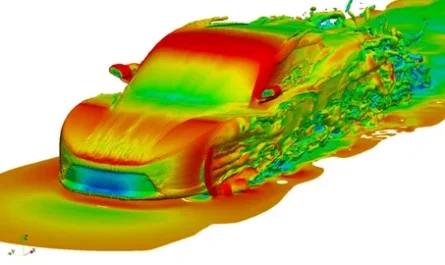Computational fluid dynamics (CFD) has emerged as a powerful tool for analyzing fluid flow and heat transfer in engineering applications. With advancements in computing power and numerical methods, CFD provides a virtual environment for understanding complex fluid flow phenomena without having to rely on expensive physical testing. In this article, we will explore the basics of CFD, how it works, and areas where it has made significant impact.
Introduction to CFD
It is widely used in engineering design to study a variety of problems involving fluid dynamics. The core principles of CFD involve discretizing the governing equations of fluid motion and solving them using numerical methods like finite volume or finite element methods. This allows engineers to simulate the interaction of liquids and gases with surfaces defined by computer geometry.
Some key aspects of CFD include:
– Defining the geometry of the problem domain and associated boundaries.
– Discretizing the geometry into small control volumes/elements using a mesh or grid.
– Applying conservation equations for mass, momentum and energy over each control volume.
– Solving the discretized equations numerically using algorithms like SIMPLE, PISO etc.
– Post processing the results using visualization tools to obtain plots of velocity, pressure, and other flow parameters.
Areas of Application
CFD finds application in diverse fields ranging from aerospace to biomedical. Some of the major areas where it has proven valuable are:
Aerodynamics: Computational Fluid Dynamics allows improved aerodynamic designs to be evaluated virtually for applications like aircraft, cars, trains etc. Complex flow patterns over wings and bodies can be efficiently simulated.
Internal Flows: Simulation of internal flows in machines like IC engines, turbo-machinery, heat exchangers helps optimize their performance and design. Aspects like combustion, heat transfer, mixing are analyzed.
Biofluid Mechanics: CFD helps study blood flow in arteries, airflow in lungs etc. aiding diagnosis and treatment procedures in biomedicine. Hemodynamics of stents and other implants are analyzed.
Process Engineering: Industries employ CFD to optimize processes involving fluid transport and heat transfer. Examples include chemical reactors, evaporators, centrifugal machines.
Ocean Engineering: Simulation of flows in ocean environments aids offshore structures, undersea vehicular design, tidal energy conversion system development.
Advantages Over Physical Testing
Some key advantages of CFD over physical testing in a wind tunnel, water channel etc. include:
– It allows design assessment without building costly prototypes, reducing development time and costs.
– Complex geometry and flow conditions can be easily simulated which may be difficult with physical models and instrumentation.
– Multiple design configurations can be evaluated in parallel virtually.
– Internal flow fields are accessible which are not possible to measure experimentally.
– Parameter studies exploring wide range of operating and design conditions are straightforward.
– Fluid properties like density, viscosity etc. can be changed easily in software simulations.
Challenges and Future Outlook
While CFD has become an integral part of the engineering design process, several modeling challenges remain, particularly for complex real-world applications involving turbulence, chemistry and multiphase flows. Ensuring numerical accuracy and verification/validation of results also require careful consideration. With further refinements in modeling techniques and exponential growth in computing power, CFD will continue transforming product development across industries. Combined with tools like additive manufacturing and Internet of Things, it promises to usher in a new era of smart, data-driven design and engineering.
Computational fluid dynamics has revolutionized the way engineering problems involving fluid dynamics are tackled today. From aerospace to biomedical, it serves as a powerful virtual laboratory for conducting fluid flow experiments and optimizing designs in a timely and cost-effective manner. As computing capabilities increase further, the potential of CFD will likely be realized to an even greater extent in the coming years.
Note:
1. Source: Coherent Market Insights, Public sources, Desk research
2. We have leveraged AI tools to mine information and compile it



